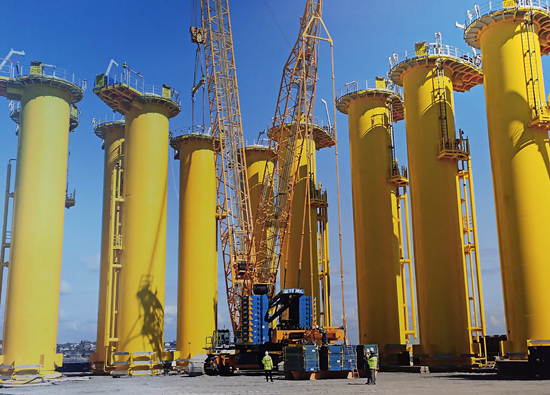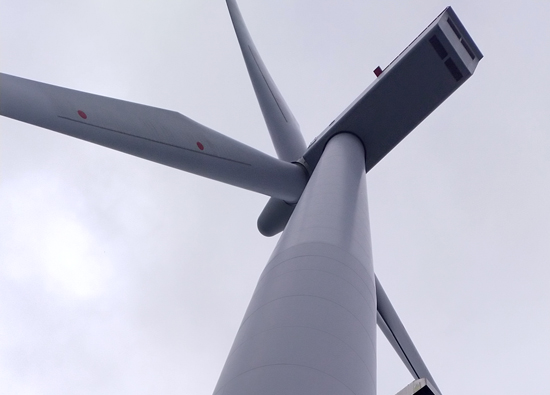09.2023 Special Report
The Story of Bamboo Wind
Zhufeng Power Preparation Office / Provided

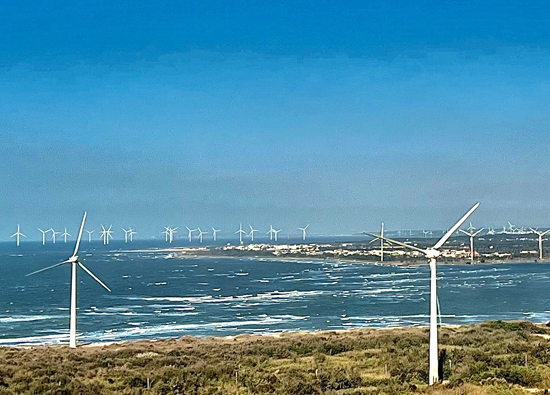
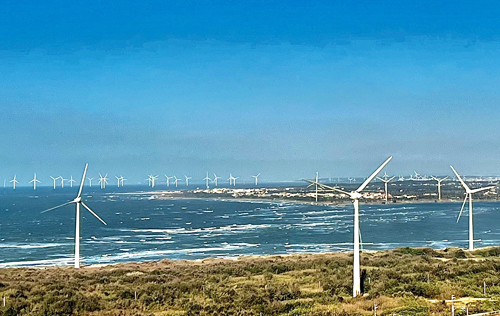 The Zhufeng offshore wind power project is one of the most important projects in the development of green energy and net zero emission reduction path for Far Eastern Group Asia Cement Corporation. When Taiwanese private enterprises were still hesitant about offshore wind power, they took the lead in developing it. In the selection results of 2018, the seven winning bidders were mainly overseas wind power companies. Only Taiwan Power and China Steel were selected, while other private enterprises were not favored. In other words, the deployment of wind power in the entire Taiwan Strait is almost dominated by foreign developers.
The Zhufeng offshore wind power project is one of the most important projects in the development of green energy and net zero emission reduction path for Far Eastern Group Asia Cement Corporation. When Taiwanese private enterprises were still hesitant about offshore wind power, they took the lead in developing it. In the selection results of 2018, the seven winning bidders were mainly overseas wind power companies. Only Taiwan Power and China Steel were selected, while other private enterprises were not favored. In other words, the deployment of wind power in the entire Taiwan Strait is almost dominated by foreign developers.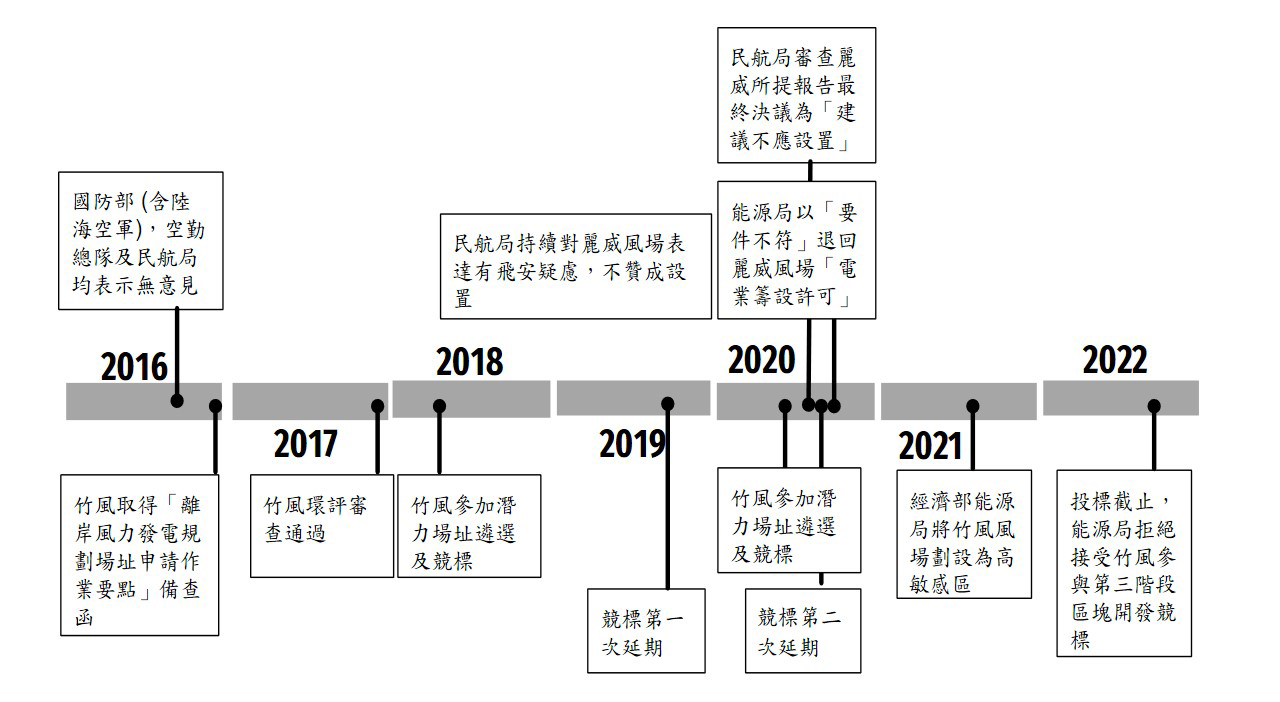 Bamboo Wind Hard Wind Circuit
Bamboo Wind Hard Wind CircuitZhufeng Wind Farm is located off the coast of Hsinchu City. When the second phase of potential site application was opened in 2016, it was the fourth wind farm of 36 potential sites announced by the Ministry of Economic Affairs. The site successfully passed the environmental impact assessment in 2017 and also participated in the offshore wind power selection and bidding by the Ministry of Economic Affairs in 2018. Although the Zhufeng project was not selected, efforts continue to be made to prepare for the bid, and we look forward to winning in the third stage of bidding.
During this period, Zhufeng increased investment by hundreds of millions of yuan, strengthened geological surveys in the sea area, supplemented wind energy monitoring, and even purchased land for the operation and maintenance center. However, influenced by the construction of wind turbines by Dade Energy at the Taoyuan Liwei Wind Farm, which raised concerns about the aviation safety of the Civil Aviation Administration, the Air Force suddenly changed its attitude of giving a consent letter in 2016, stating that the Zhufeng Construction Plant poses a flight safety risk to the Hsinchu Base and strongly opposes its establishment. The Energy Administration, based on the opinions of the Air Force, designated the airport's 7-mile control area as a highly sensitive area during the third phase of the 2021 Ministry of Economy announcement bidding, The scope of the bamboo wind farm is exactly covered.
Surprised, the Zhufeng team quickly gathered multiple international flight safety consultants and Taiwan's aviation consultants to jointly evaluate the issue. The conclusion was that there was a solution to the military flight safety issue of the newly added No. 4 wind farm outside Hsinchu. The air force base and wind farm could coexist and integrate, and Zhufeng proposed specific mitigation measures and withdrawal plans. Unfortunately, these efforts did not receive the approval of the Air Force. When the Ministry of Economic Affairs announced the third phase of bidding in 2021, The Zhufeng Wind Farm is still classified as a highly sensitive area, which led to the Energy Bureau's refusal to accept Zhufeng's participation in the third phase of block development bidding in 2022. Subsequently, due to Woxu Energy's announcement of not participating at the last moment before bidding, six other developers bid for the same amount and everyone receives a prize (Zhufeng's evaluation will also invest zero yuan). All green wind power will be sold through signing power sales contracts with private enterprises, and there is no situation of selling one-time electricity to Taiwan Power.
The following is the timeline of events related to the Bamboo Wind Project:
 The events that occurred over the past seven years have led to the following questions:
The events that occurred over the past seven years have led to the following questions:a. Is the issue of flight safety in "highly sensitive areas" due to concerns about Taoyuan Airport flight safety caused by the construction of Liwei Wind Farm by the Civil Aviation Administration?
The plan that the Air Force had originally agreed to and had already passed the environmental impact assessment was later opposed. The Zhufeng team believes that it may be related to concerns about the safety of Taoyuan Airport caused by the Civil Aviation Administration's Liwei wind farm at Dade Energy.
However, military aircraft (especially fighter jets) are vastly different from commercial giant aircraft such as the Airbus 380 and Boeing 747. Commercial aircraft are larger and have poor maneuverability, unlike military fighter jets that can make sharp turns and withstand gravity changes of 4-5G. Therefore, the Civil Aviation Administration's concerns about flight safety at Taoyuan Airport are different from the flight safety considerations around Hsinchu Air Force Base. There are also many large wind farms standing near military air force bases around the world (within 7 nautical miles), with thousands or hundreds of wind turbines coexisting with them.
b. Does setting up a wind turbine really increase the risk for pilots?
Undoubtedly, life on every plane is important, especially for our military pilots who are brave and well trained. For this reason, Zhufeng has taken many mitigation measures and retreat plans, such as reducing the number of fans (from 52 to 16), increasing the distance between fans (greater than 1000 meters), and making room for the area most likely below the fighter's flight path (avoidance corridors). Zhufeng once consulted the Air Force on how many wind turbines should be reduced to meet flight safety requirements? The answer received is that any wind turbine located at Hsinchu No. 4 Wind Farm does not comply with the "current" flight path and air force flight safety regulations.
What's even more puzzling for Zhufeng is that within the air force control area near Hsinchu Airport, there are already 17 land based wind turbines, as well as 22 Miaoli offshore wind turbines and 47 Haineng offshore wind turbines. Their location is quite close to Hsinchu Air Force Base (especially the land based wind turbines are close to the runway head). If these wind turbines can coexist with the airport for a long time, why is Zhufeng the only one with coexistence problems?
c. Will the difficulties encountered in this bamboo wind case affect Taiwan's cooperation with international enterprises?
After the second stage of potential site selection, Far Eastern Group actively convinced RWE, the world's second largest offshore wind power development operator, to participate in the development of the bamboo wind project in 2019. Because Zhufeng has already qualified to participate in the 2018 selection and bidding process, the German Rhine Group believes that the Zhufeng project is legal and compliant. When the Air Force raised doubts, the German Rhine Group believed that based on its experience in Europe, a compromise solution could be found through scientific evaluation and coordination between the two parties, but the results could not convince the Energy Agency and the Air Force. The coexistence of airports and wind turbines is no longer a problem internationally, but it has not been accepted in Taiwan.
Obviously, the main reason for the complete loss of competitiveness in 2022 bidding was due to the restrictions on bidding by the Air Force on Zhufeng, resulting in every bidding manufacturer other than Zhufeng receiving the required allocated capacity.
d. Why is the restricted area set at 7 nautical miles in the bidding rules of the Energy Administration?
The Liwei wind farm has been restricted to 10 nautical miles by the Civil Aviation Administration, but is this restriction of 7 nautical miles related to the ocean and sea energy wind farm? These two newly established wind farms fall within a 10 nautical mile limit in some areas.
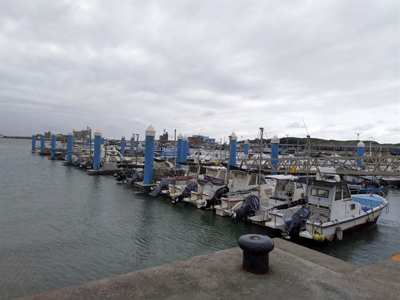 Asia Cement Corporation has been developing the Bamboo Wind project since 2016, and has had multiple discussions with many hardworking and dedicated government officials from the Energy Administration and Air Force. Everyone understands and supports the importance of green energy for Taiwan's security, and strives to find solutions that are acceptable to everyone. However, the current status is:
Asia Cement Corporation has been developing the Bamboo Wind project since 2016, and has had multiple discussions with many hardworking and dedicated government officials from the Energy Administration and Air Force. Everyone understands and supports the importance of green energy for Taiwan's security, and strives to find solutions that are acceptable to everyone. However, the current status is:a. The Air Force does not consider any modifications to the flight path of the Hsinchu Air Force Base due to the development of the Hsinchu 4 wind farm, believing that even if there is a single wind turbine in the wind farm, it does not meet the current flight path and safety regulations.
B Asia Cement Corporation recognizes the strategic importance of offshore wind power in supporting Taiwan's development of green energy and reducing its dependence on imported energy (natural gas). Therefore, it has been deeply involved in this project for a long time, persuading the German Rhine Group Innocent to invest in Taiwan and cooperate with us. At the same time, it has reduced the number of installed wind turbines from 52 to 16, and the generated green electricity is completely self used by Far Eastern Group.
The Zhufeng offshore wind farm is the core commitment of Far Eastern Group ESG, and in the future, we will continue to search for ways to coexist and integrate wind turbines with airports. Perhaps, what needs to be considered is to engage in higher-level consultations with stakeholders (Energy Administration, Air Force, and Zhufeng) and grant higher authorization in order to make decisions on a higher landscape.
#


